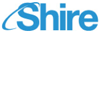Shire’s VPRIV® wins first ever “Novel Treatment Award”
Posted: 19 February 2013 | | No comments yet
“Shire has demonstrated its commitment to developing new therapies for the treatment of rare genetic diseases…”


Shire plc (LSE: SHP, NASDAQ: SHPG), announces that the Lysosomal Disease Network (LDN) presented Shire Human Genetic Therapies (HGT) with the first ever Novel Treatment Award for VPRIV on February 14th, at its 9th Annual WORLD Symposium. The LDN have launched this new award, which will be presented annually, to recognize new drugs or therapies that have made a considerable contribution in the area of lysosomal diseases.
“Shire has demonstrated its commitment to developing new therapies for the treatment of rare genetic diseases. We wanted to recognize the contribution of VPRIV for the treatment of type 1 Gaucher disease by awarding Shire the first ever Novel Treatment Award,” said Chester Whitley , University of Minnesota and Principal Investigator, LDN. “As new treatments are developed, we want to be sure that these huge efforts and accomplishments are recognized in the hope of inspiring other young investigators and corporate developers. We hope that this award is a way of demonstrating this.”
VPRIV is an enzyme replacement therapy (ERT) used for the long-term treatment of patients with type 1 Gaucher disease. The safety and efficacy of VPRIV was assessed in more than 100 patients at 24 sites in 10 countries, representing the largest and most comprehensive clinical data set to support registration for an ERT for type 1 Gaucher disease. VPRIV is manufactured using a human cell line with Shire’s proprietary gene activation technology.
“As a leader in rare diseases, Shire is honored to be recognized by LDN with its first Novel Treatment Award,” said Dr. Philip J. Vickers , Global Head of Research and Development, Shire HGT. “This award embodies the spirit of our organization – every employee at Shire is dedicated to developing and bringing forward new products, services and support offerings which can make a positive impact on patients’ lives. Shire is proud to provide Gaucher patients with an effective treatment option and continues to build upon a solid foundation, established by our lysosomal enzyme replacement therapies, to further support rare disease patients around the world.”
As part of its ongoing commitment in type 1 Gaucher disease, Shire continues to invest in further evaluating the safety and efficacy of VPRIV through the generation of long-term clinical trial data, additional pediatric data, as well as the long-term observational data collected through the Gaucher Outcomes Survey.
About VPRIV (velaglucerase alfa)
VPRIV is a hydrolytic lysosomal glucocerebroside-specific enzyme indicated for long-term enzyme replacement therapy (ERT) for pediatric and adult patients with type 1 Gaucher disease.
VPRIV has the exact human amino acid sequence as that found in the naturally occurring human enzyme.
From September 2009, patients were able to receive VPRIV via expanded access mechanisms. In parallel, Shire worked in cooperation with regulatory agencies to expedite the new drug application submissions and with priority reviews, marketing authorization of VPRIV was granted by the US FDA on 26 February 2010, 18 months ahead of anticipated timelines, and by the European Commission on 20 August 2010.
VPRIV is approved in 40 countries globally, including the US, the European Union member states, and Israel, and is for patients previously treated for type 1 Gaucher disease or those who are treatment-naive.
VPRIV Important Safety Information
The most serious adverse reactions seen with VPRIV were hypersensitivity reactions. Infusion-related reactions were the most commonly observed adverse reactions in patients treated with VPRIV in clinical studies. The most commonly observed symptoms of infusion-related reactions were: headache, dizziness, low or high blood pressure, nausea, tiredness and weakness, and fever. Generally the infusion-related reactions were mild and, in treatment-naïve patients, onset occurred mostly during the first 6 months of treatment and tended to occur less frequently with time.
All adult side effects of VPRIV are considered relevant to children (ages 4 to 17 years). Side effects more commonly seen in children compared with adult patients included: upper respiratory tract infection, rash, aPTT prolonged, and fever. The safety of VPRIV has not been established in patients younger than 4 years of age.
VPRIV is not available in all countries and prescribing information may differ between countries. Please consult your local prescribing information. Full prescribing information for VPRIV in the U.S. can be found at http://www.VPRIV.com.



